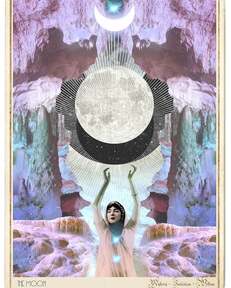 This is an offering on the importance of respecting life - of seeking permission/consent, which has been deeply alive in my own practice over several years. We live in a culture in which force is quite normative. If we don't like something or we want something, we are used to, and numb to, using force. We regularly force ourselves to do all manner of things we don't want to do. Overriding our systems, and life in general, is reliable, and we prize reliability (even when it hurts) above all else. Often, when we are not in force (or what I'd call toxic/unhealthy masculine) we are in permissiveness. We tighten down on a new exercise and diet routine for a a couple weeks only to quit at some point and binge Netflix on the couch for days. Permissiveness says that allowing is synonymous love, and its the polar opposite of the domination of force. We can see these polarities of unhealthy masculine play out internally and externally - in how we relate to ourselves and how we relate to children, among other places. What would it be like to begin in relationship to our softer selves? To build trust? To ask permission? To invite the system to try something, rather than trying to push it into doing something? And after there's connection/a sense of trust, how can we rebuild a healthy masculine that says - 'I love you and so we're going to do this because I know you'll feel better afterward' - that moves from love and connection rather than force and domination. Healthy masculine can only emerge in balanced relationship with feminine - when we are in touch with our tendernesses, our feels, our no's. I want to acknowledge some nuance here - When the body and feminine are chaotic/disorganized as they are for many of us, it often takes some healthy masculine/containment for the feminine to move into more coherence/into a state in which its signals can be read more clearly. In other words, until the feminine has more coherence/containment it's unlikely that we can glean the information we need in connection with it. Yin and Yang are deeply interwoven - each supporting and containing each other. That said, if you're moving between these poles -from fear/from force- in my experience this initial influx of order/coherence should likely come from outside of you - from a trusted therapist or guide. Respect requires and is a practice of cultivating (bit of a paradox here) equanimity. It requires us to let go of the 'wanting' and 'not wanting' that flows from fear/from our ideas about how things should be. It requires us to accept what is. To be humbled and to be made both soft and strong. To listen to what's needed - to the deeper need under the 'wanting' of the moment. For example, often I find when I go to scroll social media that the need is actually for rest - for down time - but the 'want' is to check out by scrolling. When I can listen to the need and respond to it, rather than acting from the addiction, I build trust and connection with my system. We cannot grow, we cannot truly change, we cannot find freedom from force. The vehicle and vector of liberation is our body, and so we must bring it along - we must find 'buy in' from the body/from the feminine, for anything to be truly integrated. Just as we cannot force an animal to relax, to come out from behind the bed or to receive our trust, we must bring deep respect, patience, and commitment to our relationship with our bodies and our hearts. This same lesson is true at gross as well as subtle levels, and is deeply interdependent/holographic. To respect the body is to respect the broader 'nature body' - the earth that is our bones and flesh, the rivers our blood, the trees our lungs. To respect others is to respect ourselves. These more gross trainings can begin to train us to respect each moment - the teaching of each moment. To respect the sorrow and the joy, the longing and the anger. To respect winter and spring, rain and sun. Healing comes only in this respect - in connection - there is no other way forward. "When I pushed forward I was whirled about, when I stayed in place I sank...And so I crossed over the flood without pushing forward, without staying in place. " Perhaps we can shift out of this polarity of 'pushing forward' and 'staying in place' - of force and permissiveness - and into a healthy masculine rooted in respect for and connection to the deep wisdom of the feminine. Perhaps this is the middle path.
0 Comments
|
Details
Francesca Morfesis, She/TheyPsychotherapist, postmodern buddhist, proud mammal and lover of human-ness ArchivesCategories |
 RSS Feed
RSS Feed